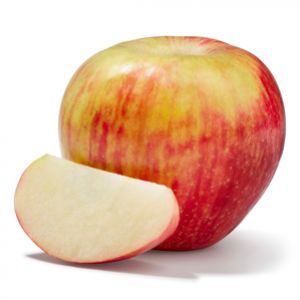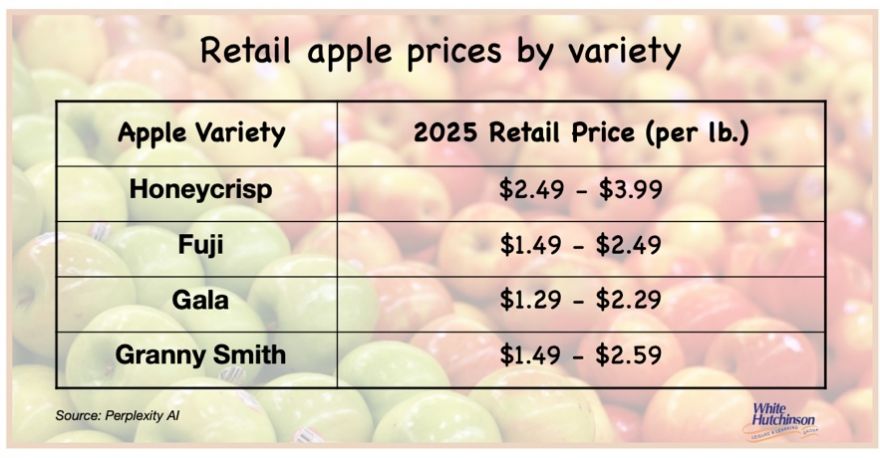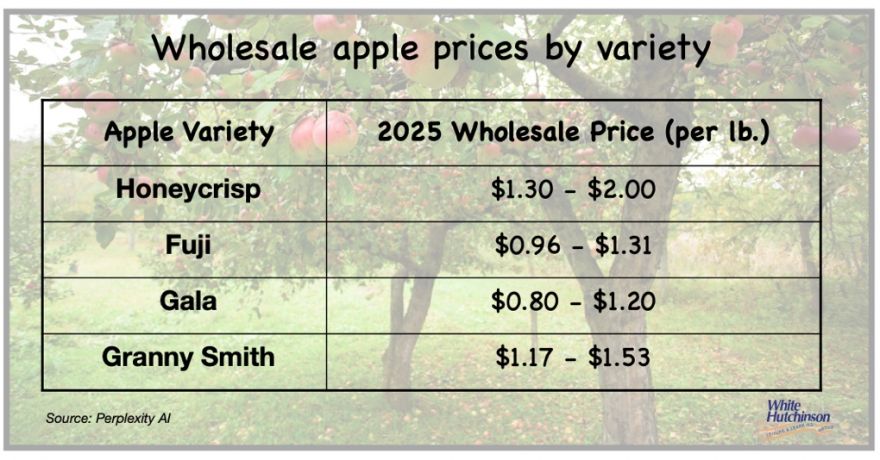
Vol. III, No. 11, November 2025
Honeycrisp reshaped the apple market
Before Honeycrisp's rise, spending more than 99 cents per pound of apples was unthinkable. Today, people will pay triple that.
Since 2011, national production of Honeycrisp apples has increased roughly sixfold.

The 34 billion bushels of Honeycrisp apples produced in 2025 equal roughly 3.4 billion apples, or approximately 10 Honeycrisp apples for every child and adult in the U.S.

Honeycrisp is forecasted to be America's third-largest apple by volume in 2025, surpassing Granny Smith for the first time, and accounting for 12% of the total 12 billion pounds of annual apple production. Washington is the top-producing state, accounting for 85% of all Honeycrisp. 60% of Honeycrisp are sold fresh, while 40% are used for processing.
The Honeycrisp apple is also known in Europe as the 'Honeycrunch' apple.
Honeycrisp ranks third in U.S. apple production.

Recent surveys show that Honeycrisp is U.S. consumers' favorite apple to purchase, with 43% preferring them over any other variety (followed by Fuji, Gala, and Granny Smith). Honeycrisp is most popular among higher-income households, older adults, and certain regional groups such as Minnesotans. Fuji apples are most preferred by younger adults, Asian American consumers, and families with children. Gala has mainstream appeal and is often favored by value-oriented and slightly younger buyers.
Honeycrisp apples are the overall favorite among consumers due to their unique combination of texture, juiciness, and balanced flavor, which sets them apart from other apple varieties.
Key factors that make them so popular with the public are:
- Explosive crispness and juiciness - Honeycrisp apples have exceptionally large cells, which burst with juice and crispness when bitten, creating a distinct texture and sensation.
- Balanced flavor profile - Their flavor is described as well-balanced - sweet with a slight tartness, moderately aromatic, and refreshing. This sensory profile appeals to both adults and children.
- Excellent storage life - Honeycrisp apples maintain outstanding flavor and crunch for more than half a year in properly refrigerated storage, making them available fresh longer than most other apple types.
Consumers recognize the higher quality and are willing to pay premium prices - often two to three times more per pound than other apples. Here's what Perplexity AI found for typical retail prices per pound this fall:

The Honeycrisp apple was developed at the University of Minnesota to withstand brutal northern winters, with the original seedling planted in 1962 as a cross between Macoun and Honeygold apples. After a painstaking process that involved hand-pollination and years of waiting for trees to mature, it was patented in 1988, released to growers in 1991, and reached grocery shelves in 1997. Initially, Honeycrisp had a slow start, but eventually their popularity soared due to their uniquely crisp texture and sweet flavor.
Honeycrisp's release revived a declining apple industry and proved transformative. Honeycrisp is credited with pioneering the trend toward premium "club" apples globally. A club apple is a patented apple variety that can only be grown and marketed by a select group of licensed growers under a strict licensing agreement. Unlike traditional apple varieties, which any orchardist can plant, club apples are proprietary - meaning a central organization, or "club," controls production, marketing, and distribution to enforce quality and consistency. Other club apple varieties include Pink Lady, Jazz, Envy, SweeTango, HoneyBee, and Cosmic Crisp.
The thin skin that makes Honeycrisp so tasty also makes it challenging to grow. Apple growers have a love-hate relationship with the Honeycrisp apple because it is difficult to cultivate, delicate to harvest and store, and prone to several common growing problems. The apples are prone to bruising and sunburn due to their thin skin. They require extensive labor for tasks like stem clipping and careful disease management, such as bitter pit, and their yields are inconsistent. This high-maintenance nature leads to higher costs for farmers. Fortunately, Honeycrisp commands a higher wholesale price. Here's the typical wholesale prices Perplexity AI found for this fall:

Subscribe to Agritourism Today



